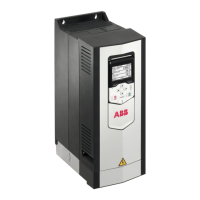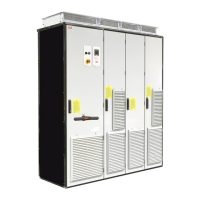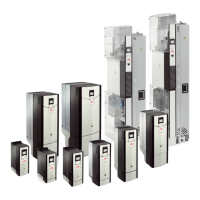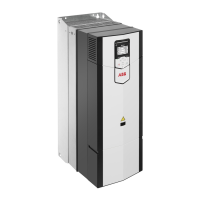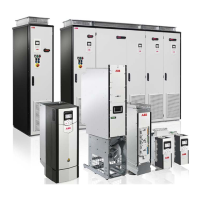SBC time to zero speed: When time C has elapsed from the start of the counter (step 3b,
activation of the STO and SBC functions), the user can push the reset button. This is a user-
defined value (parameter SBC.13 SBC time to zero speed).
C
1. The user pushes the emergency stop button (this activates the SS1 function of the FSO
module).
2. The drive starts to decelerate the motor along the user-defined stop ramp. The FSO
module starts the ramp monitoring (SAR1 parameters 200.112, SARx.21, SARx.22 and
SARx.02).
3. a) The motor speed reaches the zero speed limit. The FSO module activates the drive
STO and SBC functions (this opens the main contactor/breaker) and stops the ramp
monitoring.
Note: You can set an additional delay for the STO and SBC activation (parameter
SS1.15 SS1-r ramp zero speed delay for STO).
4. a) The user releases the emergency stop button.
5. a) Time C has elapsed. The emergency stop indication lamp comes on. The user can
push the reset button, that is, the acknowledgment of the STO function is possible.
6. a) The user pushes the reset button (this resets the emergency stop circuit and
acknowledges the STO function).
7. a) The FSO module deactivates the STO function in the drive and closes the main
contactor/breaker. The emergency stop indication lamp goes off. The drive is ready for
a restart.
Case B: The motor speed does not follow the user-defined stop ramp monitoring window
Time
Motor speed
1
2
6b
7b
E-stop button
(SS1 request)
Drive STO
status
Reset button
B
3b
A
4b
C
Indication lamp
5b
Contactor
(SBC output)
SBC.13
Safety function response time.A
Zero speed limit: Speed limit for activating the drive STO and SBC functions. Activation of the
SBC function opens the main contactor/breaker. This is a user-defined value (parameter
FSOGEN.51 Zero speed without encoder).
B
Option description 25
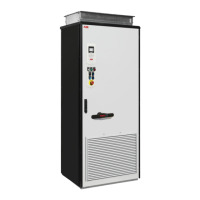
